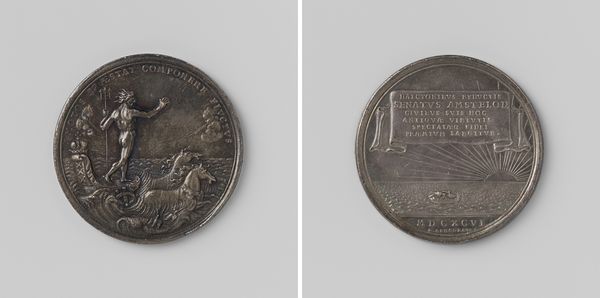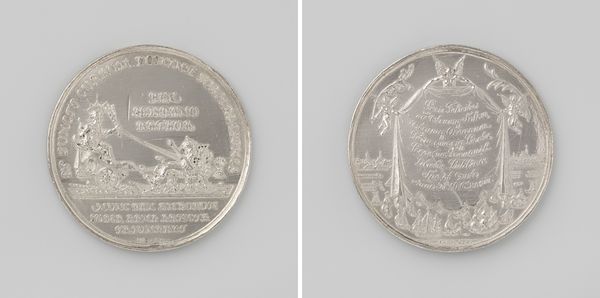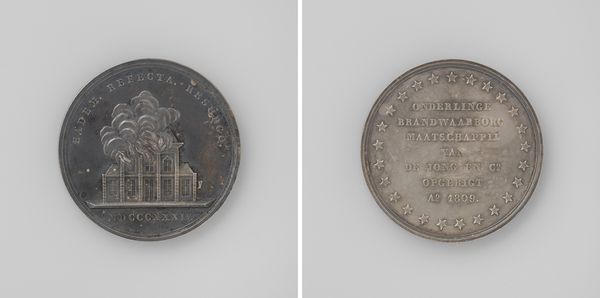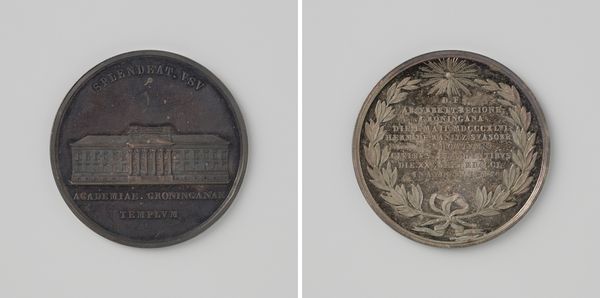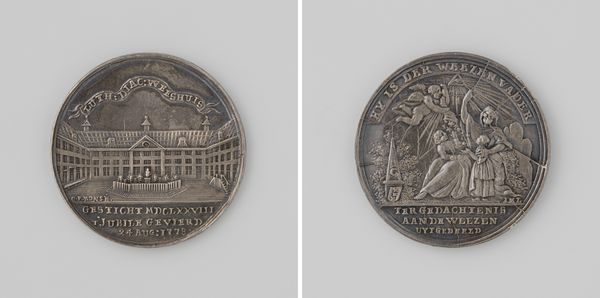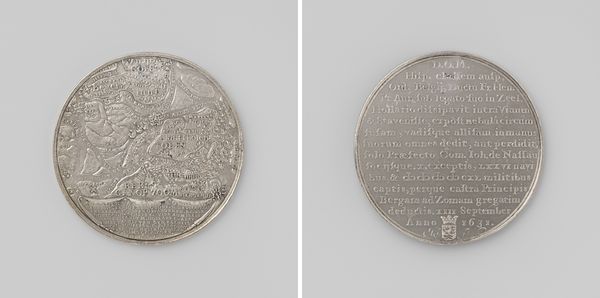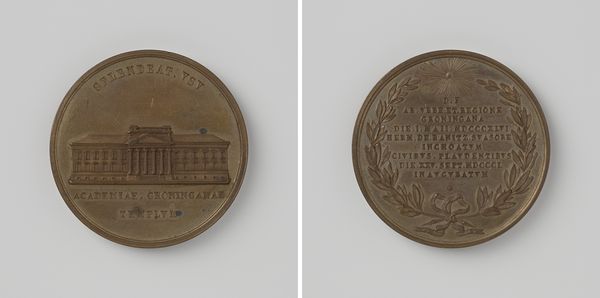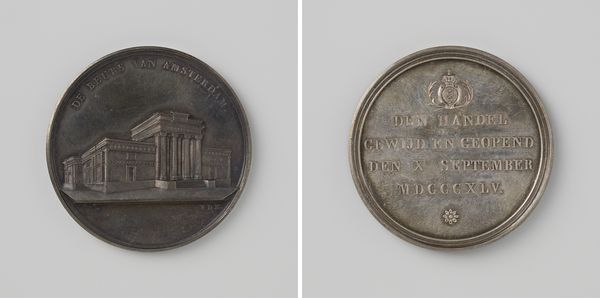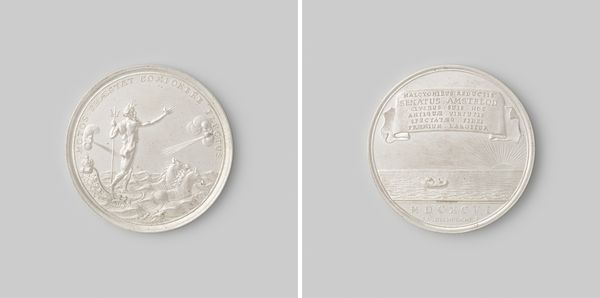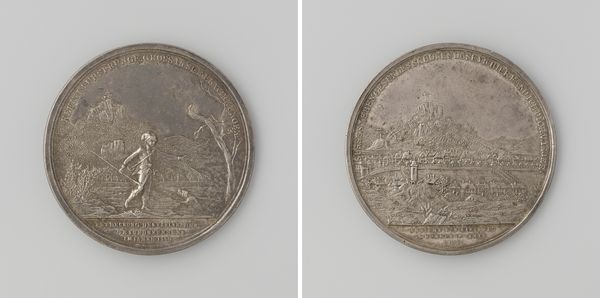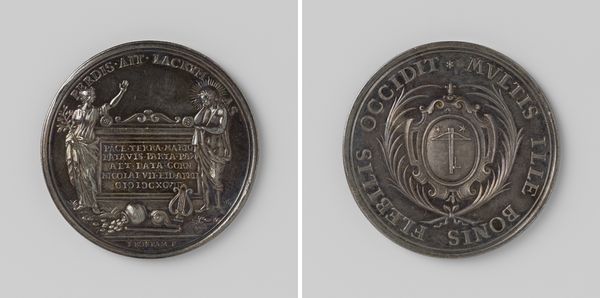
Overlijden van Theodorus Knoeffel, stichter van de plantage Elisabeths Hoop in Suriname; penning geslagen op last van zijn broer P.L. Knoeffel 1758
0:00
0:00
print, metal, engraving
#
portrait
#
baroque
# print
#
metal
#
history-painting
#
engraving
#
miniature
Dimensions: diameter 3.5 cm, depth 0.3 cm, weight 14.5 gr
Copyright: Rijks Museum: Open Domain
Editor: We’re looking at a commemorative medal from 1758, made in memory of Theodorus Knoeffel. It’s an engraved metal piece. On one side, we see what looks like a colonial landscape. It’s quite small, but intricate. What do you make of the imagery chosen here? Curator: This medal presents us with a fascinating layering of visual language. On one side, we see a ship, the plantation, a symbolic representation of “civilization” imposed upon the Surinamese landscape. Notice the Latin inscription, "Vigilantia et Labore"—"Vigilance and Labor." It's not merely descriptive; it's prescriptive, carrying the weight of colonial ideology. Do you think the ship symbolizes freedom and new beginnings, or exploitation? Editor: It’s hard to ignore the colonial context, so exploitation comes to mind first. I guess the vigilance they’re talking about is control and the labor is forced. Curator: Precisely. This juxtaposition encapsulates the core narrative of colonial enterprise – a veneer of progress built upon exploitation. The other side displays a funerary urn, laden with baroque symbolism. What feeling does that give you in connection with the first image? Editor: A sense of deep contradiction, really. It's honoring one man, while obscuring the suffering that funded his endeavor. The idealized landscape versus the reality. Curator: Indeed, this medal acts as a potent reminder. It is a deliberate act of remembering Theodorus Knoeffel and promoting vigilance and labor, while it risks completely forgetting those that it impacted. It's a carefully crafted message intended for posterity, a cultural artifact laden with symbolism and moral ambiguity. Editor: So, in effect, the images work together to celebrate a skewed version of history, even now. I hadn't thought about how literally commemorative art shapes our understanding of the past. Curator: Exactly! It serves as a testament to how images carry emotional, cultural, and psychological significance over time.
Comments
No comments
Be the first to comment and join the conversation on the ultimate creative platform.
